When it comes to growing your own mushrooms – be it at home or even in a farm setting – there are few choices of mushrooms better suited for ease and reliability than the oyster mushroom.
Oyster mushrooms are a beginner’s favourite for their resilience, fast growth and ability to grow almost anywhere on just about anything.
If you’re looking to grow your own oyster mushrooms, you’ve come to the right place – this guide will walk you through everything you need to know to grow delicious oyster mushrooms.
Why grow oyster mushrooms?
Oyster mushrooms have exploded in popularity over recent years as their availability becomes more widespread. Interestingly, the cultivation of oyster mushrooms is quite recent and only dates back to the early 20th century, when Germans decided to cultivate the mushroom for subsistence during the second World War.
They’re easy to grow
Whether you have never grown a mushroom before in your life, or have been a seasoned pro for decades, the oyster mushroom is a great choice of mushroom for cultivation.
For beginners, oyster mushrooms are the arguably best starting place – oyster mushroom spawn is easy to find, effortless to work with and has a high chance of success when compared to other species of mushrooms.
Some species of oyster mushrooms are also incredibly fast-growing, meaning that you could have your first flush just weeks after inoculation!
They’re low maintenance
Once you’re all set up and your mushrooms are out of incubation, the only maintenance routine you’ll need to follow is a simple misting of your mushrooms and their growing environment. Literally, a few sprays with a water bottle a day will do it!
It’s cost-effective
With the proper setup, equipment and if you have sourced your own substrate, you will be able to grow flush after flush for the same cost as a few supermarket portions of oyster mushrooms.
They’re super healthy
Oyster mushrooms have become known for their range of health benefits and compounds – although, their medicinal properties have been used for centuries.
Oyster mushrooms are packed with nutrients. They contain fibre, vitamins, minerals and key nutrients. Much like other species of mushrooms, these wonderful fungi are also low in carbohydrates and contain virtually no fat. They also provide antioxidants, help to lower cholesterol and can help regulate blood pressure.
Getting prepared
As with any mushroom growing project, planning and preparation are critical to achieving optimal results.
Mushroom growing kits vs the DIY approach
If you’re new to the world of mushroom growing, an oyster mushroom growing kit can be a great place to start your journey into fungi culture. We often recommend that people start with one of our oyster mushroom growing kits, as they provide you with everything you need to get started – including a detailed set of instructions specifically for the strain you are growing.
Not all mushroom kits are made equally, however, and you should know the difference between some of the options on the market.
Preinoculated ("open and spray") kits vs DIY Kits
Preinoculated Kits
There are two main options on the market – the most common option being pre-inoculated “open-and-spray” kits. These are kits that have already been inoculated with mushroom spawn and just require opening and misting with water.
Whilst these options are by far the easiest to get started with, they also come with some considerable downsides.
The biggest issue with these types of kits is that you can never be sure how long the kit has been sat on a shelf or kept in storage.
As a result, the live mushroom spawn can easily degrade or die whilst in these conditions – resulting in a lower quality harvest or if you’re unlucky, experiencing no growth at all!
The other downside for these kits is that they offer little to no insight into actually growing your own mushrooms. The entire process of substrate selection, pasteurisation, inoculation and incubation is all done for you.
Whilst this may be exactly what some people are looking for, we find that for many, the most rewarding aspect of growing mushrooms is, well, actually growing your own mushrooms!
That’s where the DIY kits come in.
DIY Kits
DIY mushroom growing kits, like our famous pink oyster mushroom growing kit, for example, provide you with everything you need to grow your own mushrooms – and to learn whilst doing so.
Included in the kit is a heat resistant mushroom growing bag, a straw-based substrate, fresh mushroom spawn, a growing environment and a detailed set of growing instructions. These kits are perfect for beginners who wish to learn more about mushroom cultivation, as they offer the same experience as doing the process DIY but with the right materials and guidance from the start.
There is also an option to purchase a kit as a gift which allows you to order your mushroom spawn separately to ensure you have the freshest spawn possible when you decide to use the kit.
Complete DIY Approach
If you have decided to grow oyster mushrooms in a truly DIY fashion, then you’ll need to plan ahead and gather your materials. One of our goals at Urban Farm-It is to help and empower people to both learn and grow their own foods.
We absolutely love seeing our customers progress from mushroom kits to set up their own growing facilities, whether it’s a low tech home setup or a professional farming facility.
The beauty of taking this route is the flexibility of deciding how you wish to grow your mushrooms and to experiment with different techniques and materials.
Ordering your supplies
Buying mushroom spawn
First things first, getting the best quality mushroom spawn you can find is critical to maximising your chances of success when growing mushrooms. We have a wide range of oyster mushroom spawn for both hobbyists and wholesale. Our mushroom spawn is produced in partnership with Mycelia Belgium to bring you some of the best quality spawn in Europe.
If you’re looking for a wide range of mushroom species, our wholesale mushroom spawn collection is the place to look.
Choosing the right substrate
The first thing you will need to think about is what you will be growing your oyster mushrooms on. A mushroom substrate is a medium in which your mushrooms grow and develop – it is the source of nutrients and sustenance for your mushroom mycelium.
Check out our ultimate guide to mushroom substrates to learn more about choosing or making a mushroom substrate.
When it comes to choosing a substrate for oyster mushrooms, you have a number of options to choose from. Unlike growing species like the shiitake mushroom, oyster mushrooms are super versatile.
Popular choices include:
- Straw
- Sawdust
- Cardboard
- Sawdust pellets
- Coffee Grounds
- Logs (if growing outdoors)
Less obvious (and not generally recommended) but creative ideas:
- Books
- Uncle Ben’s rice (yup, you read that right!)
We recommend a straw-based substrate for most use cases.
Choosing a strain of oyster mushroom
The next thing to consider is the type of oyster mushroom you want to grow. When we talk about oyster mushrooms, most people will default to thinking about the grey oyster mushroom – also known as Pleurotus ostreatus.
While the grey oyster is a top favourite of ours, oyster mushrooms include a variety of unique and diverse strains of mushrooms. The type of oyster mushroom you choose will dictate certain aspects of your growing environment, including temperature, fresh air supply, time to harvest and placement.
Here are some of our favourite types of oyster mushrooms to try out:
- Pink Oyster (Pleurotus djamor)
- Yellow Oyster (Pleurotus citrinopileatus)
- Blue/Grey Oyster (Pleurotus ostreatus)
- White Elm Oyster (Pleurotus ostreatus var. florida)
- King Oyster (Pleurotus eryngii)
How to choose a strain
There really isn’t a right or wrong choice when it comes to selecting your strain – it’s completely preference. With that being said, each strain has its own set of characteristics that may influence your decision – be its flavour profile, preferred growing conditions, shelf life or health benefits.
Blue/Grey Oysters (Pleurotus ostreatus)
Buy Now Blue Grey Oyster Mushrooms From £6.99
Going by a number of names, the grey oyster mushroom is perhaps the most popular choice of oyster mushroom. They are like the poster child for oyster mushrooms.
Their preferred growing conditions are colder in temperature compared to other oysters. This strain of oyster mushroom grows naturally in the UK so make a great choice – especially if growing outside.
Pink Oyster Mushroom (Pleurotus Djamor)
Buy Now Pink Oyster Mushroom Spawn From £6.99
Perhaps one of the most visually appealing mushrooms out there, the Pink Oyster mushroom is one of the fastest-growing strains of oyster mushrooms. These stunning fruiting bodies can be ready for harvest within 3 weeks of inoculating your substrate.
Pink Oyster mushrooms are naturally found in warmer climates and their preferred growing conditions reflect this with an ideal temperature between 18°C-30°C (or 64-86 Farenheight).
Golden Oyster Mushroom (Pleurotus citrinopileatus)
Buy Now Gold / Yellow Oyster Mushroom Spawn From £6.99
Otherwise known as Yellow Oyster mushrooms, these luminescent fungi are known for their bright colour and petal-like appearance. Similar to the Pink Oyster mushroom, these oysters prefer warmer temperatures between 18°C-30°C (or 64-86 Fahrenheit).
King Oyster Mushroom (Pleurotus eryngii)
Buy Now King Oyster Mushroom Grain Spawn From £6.99
King Oyster mushrooms usually stand out as the most different to other types of oyster mushrooms in terms of their appearance. These mushrooms are not usually considered to be a beginner’s choice as their cultivation can prove difficult for inexperienced growers. Their preferred temperature is between 12°C-18°C (or 45-65 Fahrenheit).
Other growing supplies to consider
Aside from your substrate and your spawn, you’ll need to think about the containers and utensils you will be using throughout your growing project.
We would recommend investing in suitable growing bags or containers for your growing environment. Purpose made mushroom growing bags can be easily found online (our very own are coming soon), but ultimately provide two functions:
- Heat resistance – you’ll need a growing bag or container that can withstand above boiling temperatures, as you may wish to pasteurise your substrate directly in the bag.
- Filtered – you’ll also need to ensure your growing bag or container allows for optimal air exchange – letting fresh air reach the substrate, without letting competing organisms in.
If you’re opting to grow your mushrooms in buckets, you can purchase the desired size bucket from Amazon and drill your holes as necessary.
Preparing the Oyster Mushroom Substrate
Next to the quality of your mushroom spawn, the mushroom substrate will have the greatest impact on the end result of your growing project.
A good oyster mushroom substrate should provide a nutrient-rich structure and food source for the mushroom mycelium. It should contain a high enough moisture content to keep the mycelium and consequently, the fruiting mushrooms hydrated.
A well-prepared mushroom substrate should provide all of the above whilst also ensuring there are no competing bacterial or fungal habitants lurking that could inhibit the growth of your mushrooms.
As mentioned above, there are some popular substrate choices when it comes to cultivating oyster mushrooms. These include straw, cardboard, sawdust and coffee grounds.
Straw & Cardboard Substrates
In order to prepare straw or cardboard substrates for inoculation, you will need to pasteurise the mix. Whilst there are a number of pasteurisation techniques available, the easiest and most approachable method is to use simple heat pasteurisation.
To do this, simply submerge the straw or cardboard in very hot water – between 65°C-80°C (or 149-175 Fahrenheit) for up to 2 hours. If using a mushroom growing bag, you can also pour the water directly into the bag, seal it shut with tape or clips and let it sit for up to 8 hours.
This is our recommended approach as it requires very little equipment, resource and effort, whilst producing a great substrate mix.
Once time is up, it’s time to drain your substrate.
If using a heating pot or container, you may wish to use some form of sieve to pour the mixture into and allow it to drain. If using a growing bag, simply cut the lower corners of the bag and allow it to drain.
Sawdust Pellets
Sawdust or straw pellets require very little preparation. They are pasteurised during the manufacturing process, so you will just need to rehydrate them to use them. Simply soak the pellets in clean water for between 30-40 minutes. This should allow you to easily break up the pellets to form your substrate mix.
Coffee Grounds
Coffee grounds are a somewhat unusual choice for a mushroom substrate but there are actually some good merits for doing so.
Firstly, coffee grounds are a waste product – a byproduct of the nation’s second favourite hot beverage (assuming you’re using a cafetiere).
This alone is a great advantage, not only is the substrate practically free, it is often abundant and is even pasteurised during the brewing process (assuming it has been stored correctly and is free from contamination).
In addition to this, coffee grounds – with the right preparation and growing conditions – can make a surprisingly good substrate.
The trick with using coffee grounds as a mushroom substrate is to use them within a day of brewing them. The longer you leave them, the higher the chance that moulds or other competitors may appear.
Coffee grounds are also best used in conjunction with other substrate materials, such as straw or sawdust.
Inoculating your Oyster Mushroom Substrate
Substrate inoculation is simply the process of inserting or adding your mushroom spawn into the mushroom substrate. With loose mix substrates – like straw or sawdust – inoculation is as simple as mixing the mushroom spawn into the substrate.
Wash your hands and work surfaces
It is absolutely key to ensure that your working environment is sanitary during the inoculation process. The last thing you want to do after preparing your substrate and purchasing your spawn is to hand-deliver competitive bacteria that could outcompete your spawn.
Ensure your substrate has an optimal moisture content
Before inoculating your substrate, you will want to give a final check as to whether the moisture content is optimal for growing purposes. If you pasteurised your substrate in water and allowed it to drain naturally, you may find that no additional moisture is needed.
If you find that your substrate is either too dry or too wet, you can either add additional water or allow it to dry out for longer. If you are unsure, you can use a simple squeeze test to check the moisture content. Squeezing a handful of your substrate mix (remembering to wash your hands first!) should produce just a few drops of water.
The moisture content of between 50-70% is usually optimal for most mushrooms.
Mix your spawn into your substrate mix
Using either a sterilised container (such as a large cooking pot or plastic container) or growing bag, mix your substrate and spawn together thoroughly.
The better the spread, the quicker and more effective your mycelium colonisation will be.
Fill your mushroom growing bag with your spawn and substrate mixture.
If you pasteurised your mushroom spawn directly in the bag, you can skip this step. If you have pasteurised and mixed your spawn and substrate together in a separate container, carefully place the mixture into your growing bag.
(Optional) Insert air exchange holes throughout the bag
If you’re not using a purpose-made mushroom growing bag, you will need to add some holes for air exchange to your growing bag. Simply cut 2-3 cm holes every 10-15cms for optimal air access.
Incubating your Oyster Mushrooms
With most of the hard work out of the way, it’s now time to let your mushrooms do their thing!
The incubation period will see the mushroom mycelium grow and spread through the substrate, ready for the mushrooms to fruit.
Whilst the incubation period is relatively low maintenance, you will want to ensure that certain conditions are maintained as not to inhibit the growth of your mushrooms.
The specific temperature at which you will keep your mushroom growing environment will depend on the species of oyster mushroom you are growing. Refer to the above section “how to choose a strain” for your chosen species’ requirements.
Generally speaking, you can use a warm and consistently heated area of your house to incubate your mushrooms. It is best to ensure the substrate is kept out of direct light. Our mushroom growing kits advise using the box they arrive in as the growing environment to provide both structure and to help keep light out whilst incubating.
The reason we wish to keep as much light out as possible during incubation is to prevent early pinning or fruiting.
How do I know when incubation is complete?
The best way to know if your mushroom incubation is complete is to examine the substrate mix. If your substrate is completely covered in white wool-like material, you’re good to go.
Common pitfalls with incubation
Unfortunately, the incubation period is often where people may find issues with their growth. Often this will be from contamination much earlier in the process, which is why we stress the importance of sanitising surfaces and hands when preparing your substrate and spawn.
Keep an eye out for mould in your substrate
If you’re unfortunate enough to find mould amongst your mycelium, it may be time to start over. Simply compost your substrate and repeat the above processes with extra care with sanitisation.
Can I not just let it grow out?
This is completely up to you, but if you are seeing mould in the substrate at this stage, your mushrooms may fail to ever grow. Still, it may be worth an experiment but we do not recommend it!
Fruiting your Oyster Mushrooms
Sound the alarms, the time has come! You’re finally ready to prepare your mushrooms for fruiting.
Mushrooms can be thought of as the fruits of mycelium. In the wild, once the mycelium has fully colonised the substrate and is essentially out of further nutrition, it will want to reproduce to increase its chances of survival. It produces the mushrooms to create its own mushroom spore powerhouses.
This is useful to keep in mind, as we can recreate the perfect conditions for mushrooms to fruit at home.
What do we need to consider?
Temperature
As previously mentioned, the specific temperatures you should keep your mushrooms in will depend on the strain.
Humidity/moisture
Whilst your mushrooms are getting ready to fruit, it is vital to maintain optimal moisture and humidity levels. To do this, simply use a sterilised spray water bottle and clean water to mist your growing environment twice a day.
Try not to spray your mushrooms directly, but rather keep the container moist as this will help the mushrooms from drying out.
Light
Lighting is important to help signal to your mycelium that it is time to fruit. However, you should avoid placing your mushrooms in direct sunlight as this can prevent optimal growth and even dry the mushrooms out.
Air supply
Oyster mushrooms LOVE oxygen-rich fresh air. In their natural habitats, oysters are found decomposing logs or organic matter in open deciduous spaces.
How long will it take?
The time it takes to see the initial pins and the end fruits will depend on the strain, but you can expect to see your first flush within 7-10 days from the end of incubation.
Common pitfalls during the fruiting process
The most common issue we see when fruiting oyster mushrooms is the lack of moisture and fresh air. Without optimal moisture content, you will see stunted growth and yellowing of the mushroom bodies. You can address this by spraying further water, but it is best to prevent this in the first place.
A telltale sign that your mushrooms aren’t receiving optimal fresh air is the narrowing and extension of the mushroom stems. This is a sign of high Co2 levels in your environment. Ensure your mushrooms have regular access to fresh air to avoid this.
Harvesting your Oyster Mushrooms
Finally! It’s time to harvest your mushrooms and enjoy your hard work.
When are oyster mushrooms ready to be harvested?
When it comes to deciding when to harvest your oyster mushrooms, there is some preference involved. We say preference, but most are in agreement that the best time to harvest is when the edge of the mushroom caps begin to flatten or turn upwards.
It is at this stage that the mushrooms will be beginning to release large amounts of spores.
When is it too late to harvest oyster mushrooms?
It is only too late to harvest your mushrooms if they have completely dried out or have begun to decompose. If you notice your mushrooms have stopped growing, are visibility drying out and leave spore prints, it is probably your last chance to harvest whilst they are still worth eating!
How is best to remove the oyster mushroom from the substrate?
It is generally best to gently twist the mushroom at the base of the stem or to carefully cut it flush with the substrate.
Getting more oyster mushroom harvests
Once you have harvested your first flush, it is time to repeat the process from the fruiting stage. Ensure your substrate is well hydrated, ventilated and optimally positioned.
When will the second oyster mushroom harvest appear?
You can expect to see a second harvest between 1-2 weeks after your initial flush.
How many harvests can I expect?
The number of harvests you can expect will depend on the size of your substrate and the amount of mushroom spawn you have used. Generally speaking, you could expect up to 5 harvests, though the size of your grow may diminish with each flush.
Recycling your spent substrate
If you’re looking to score extra points, composting your spent substrate mix is a great way to get rid of your materials in an eco-friendly manner. Not only that, you could actually see an additional flush as the mycelium has access to additional nutrition.
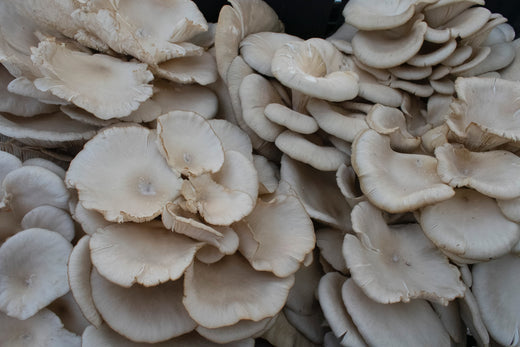
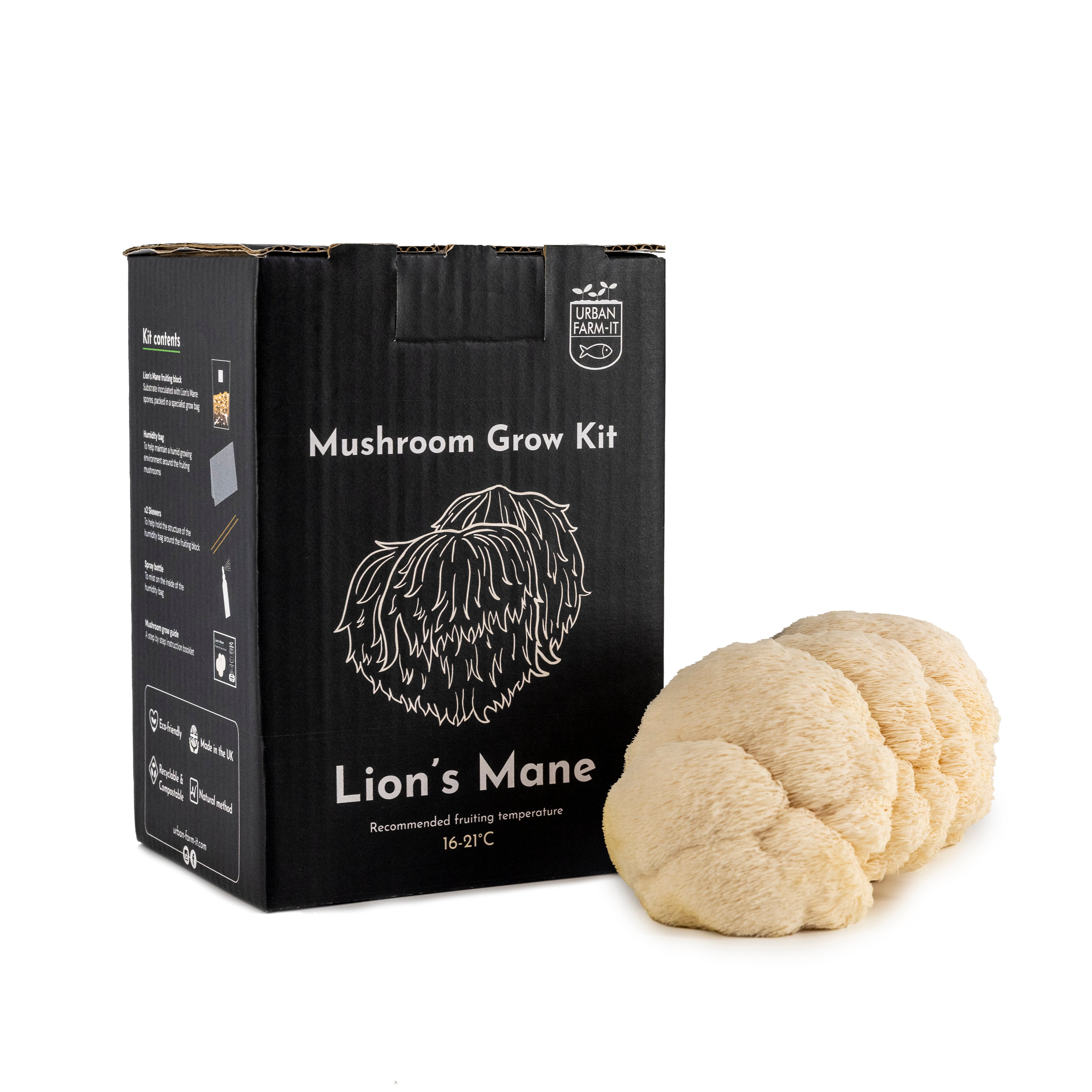
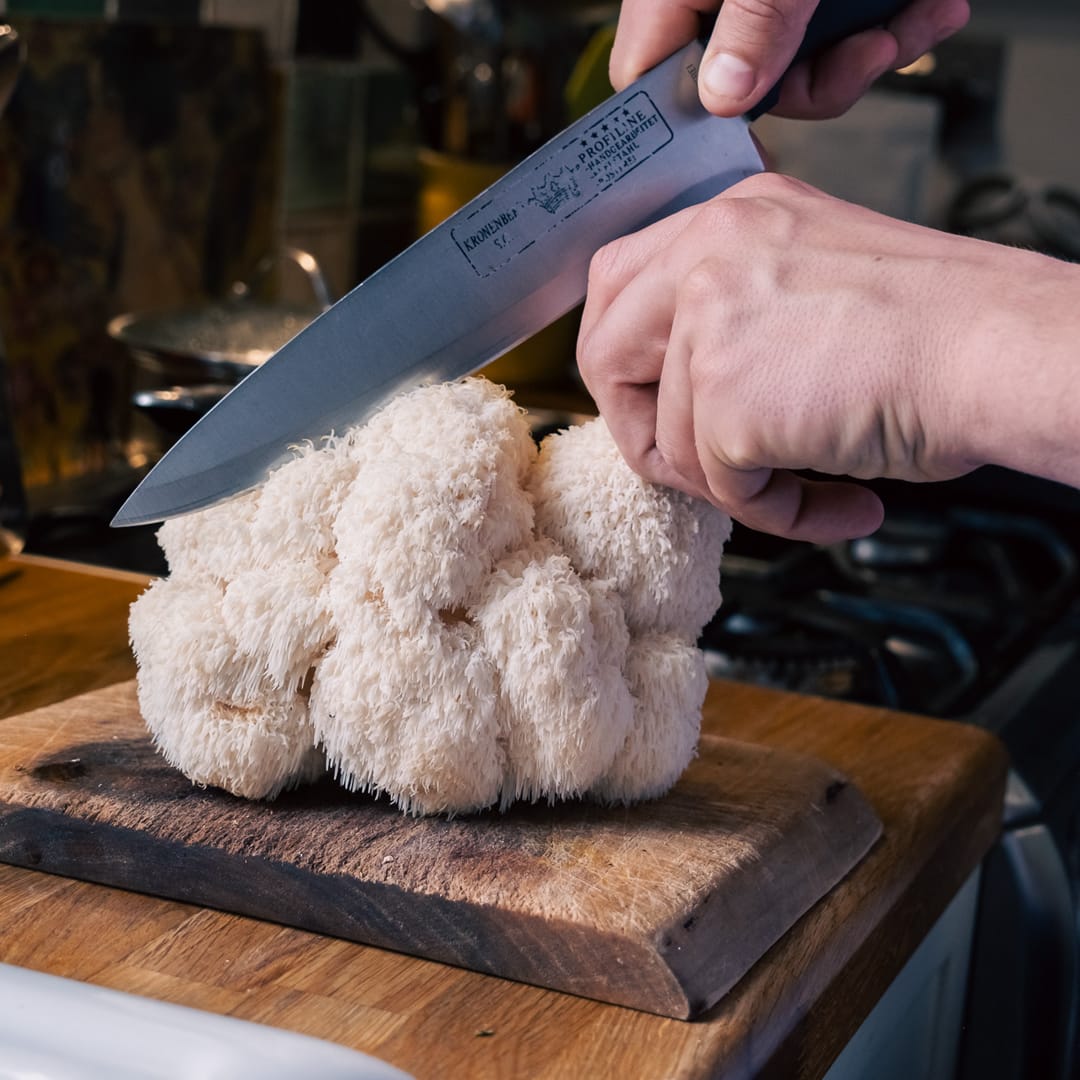

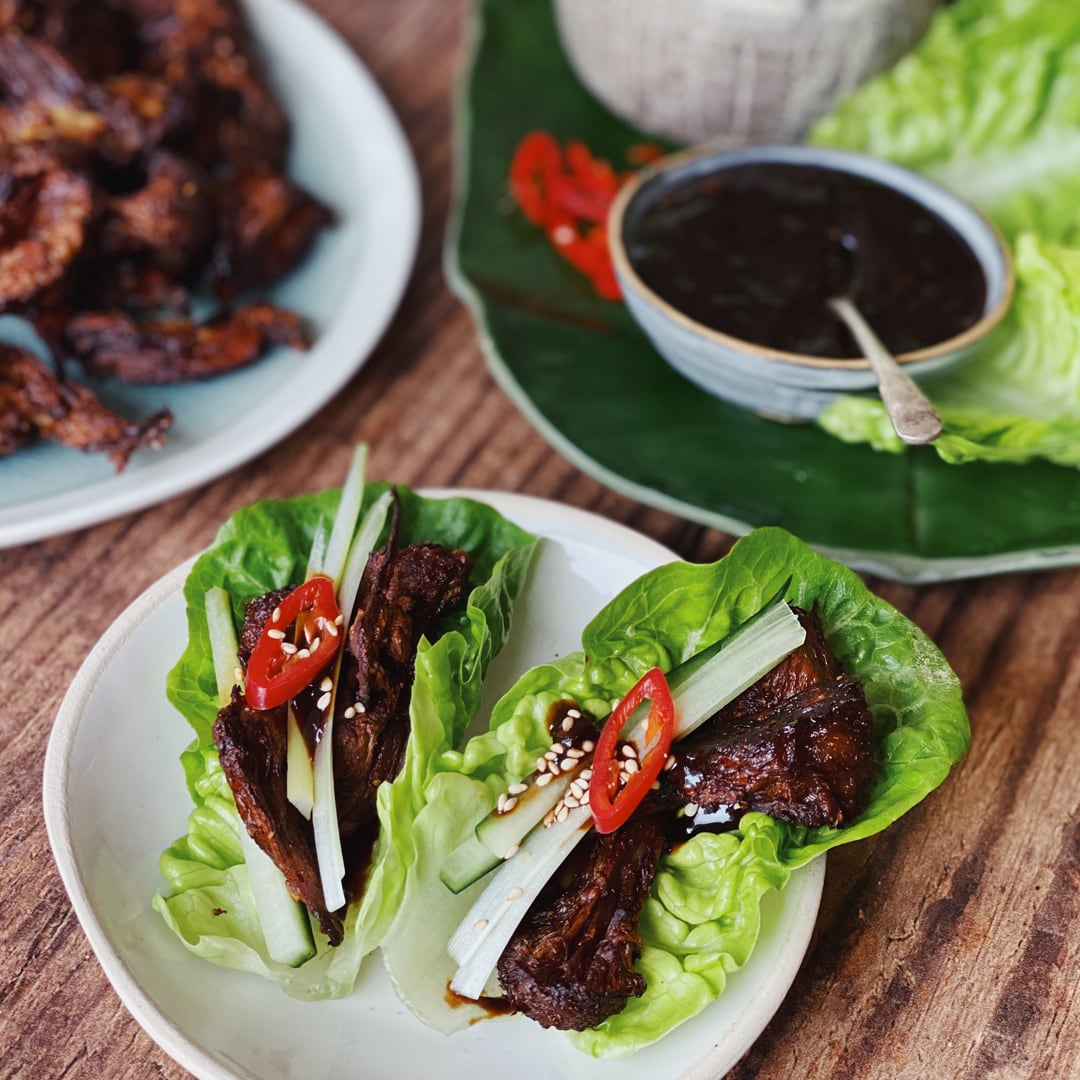
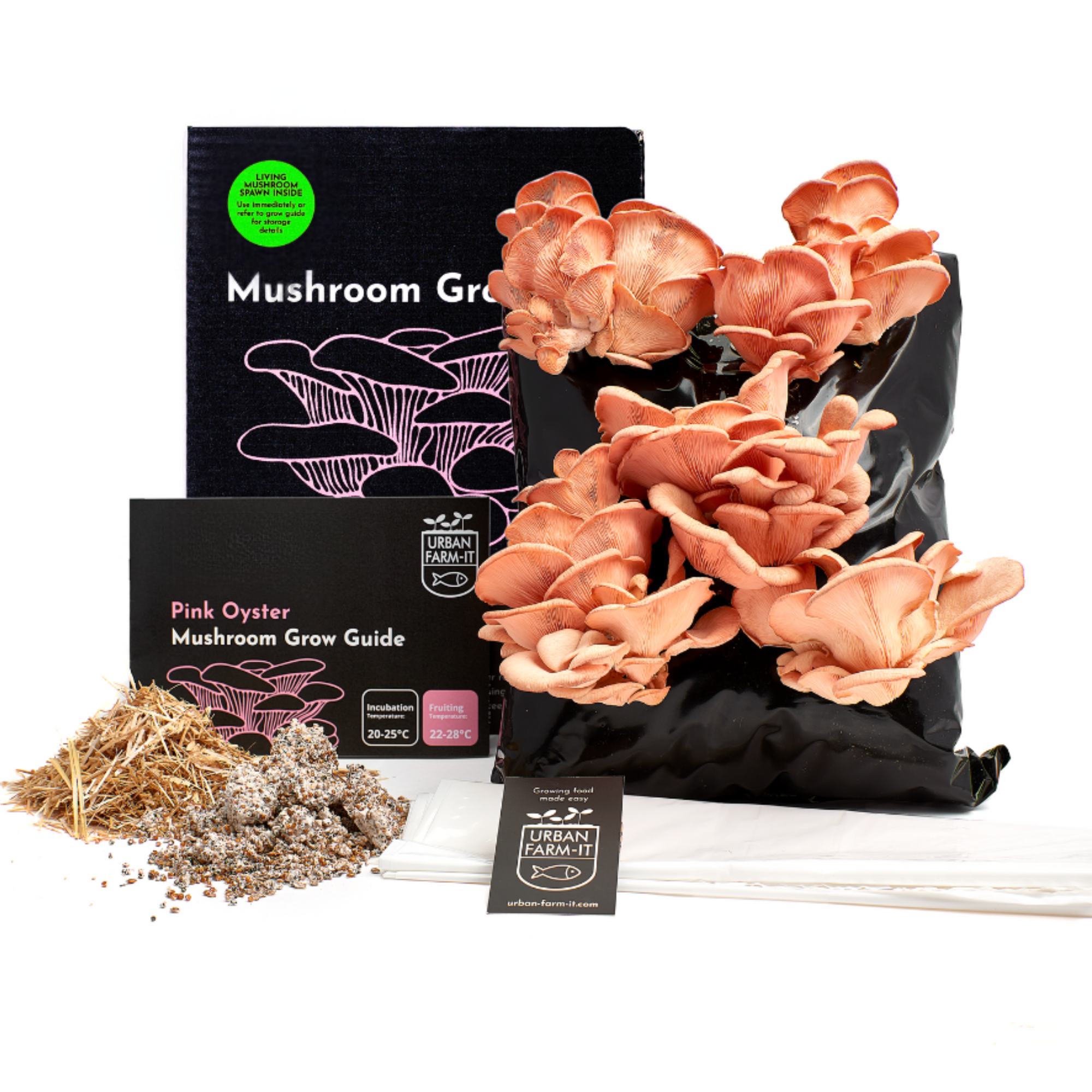
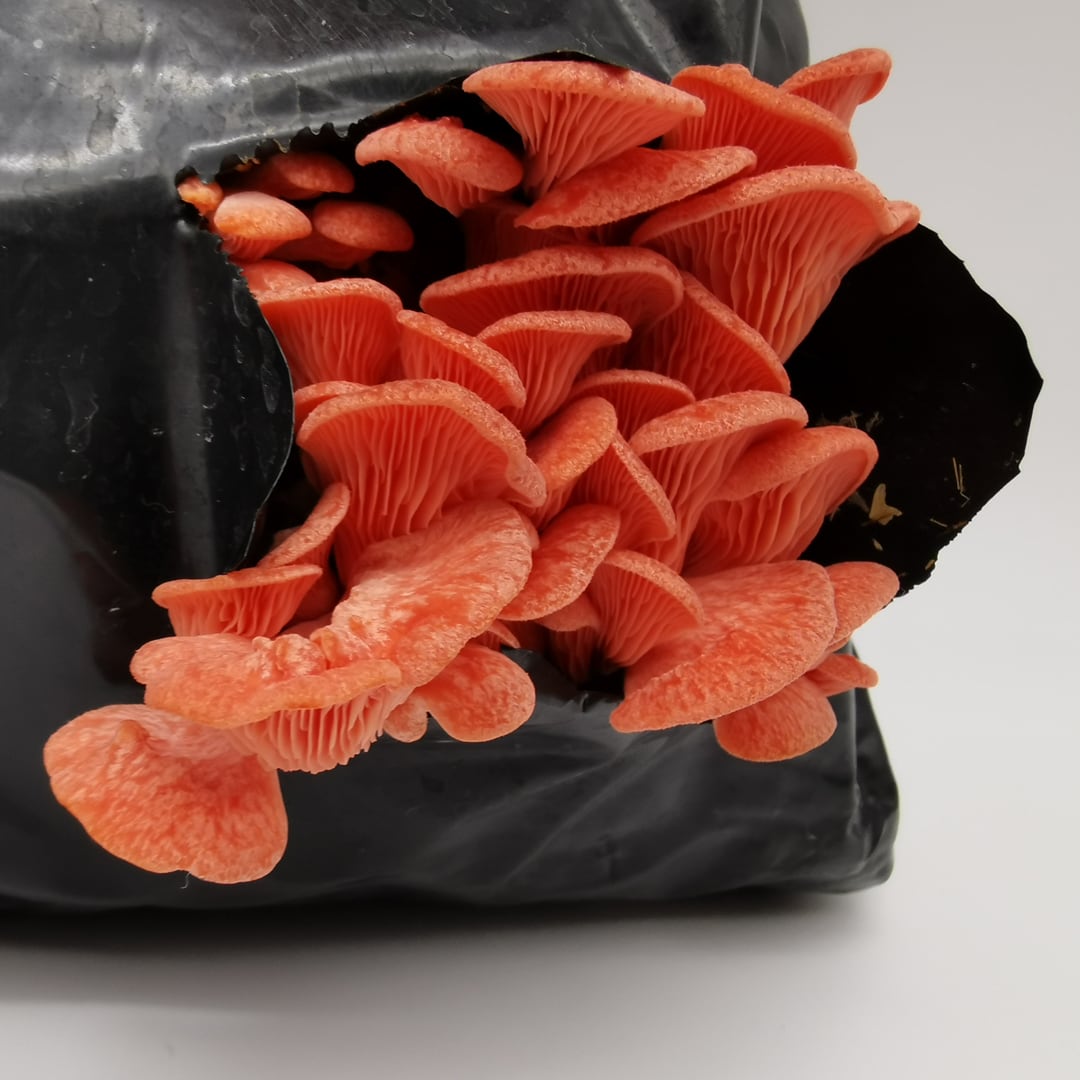
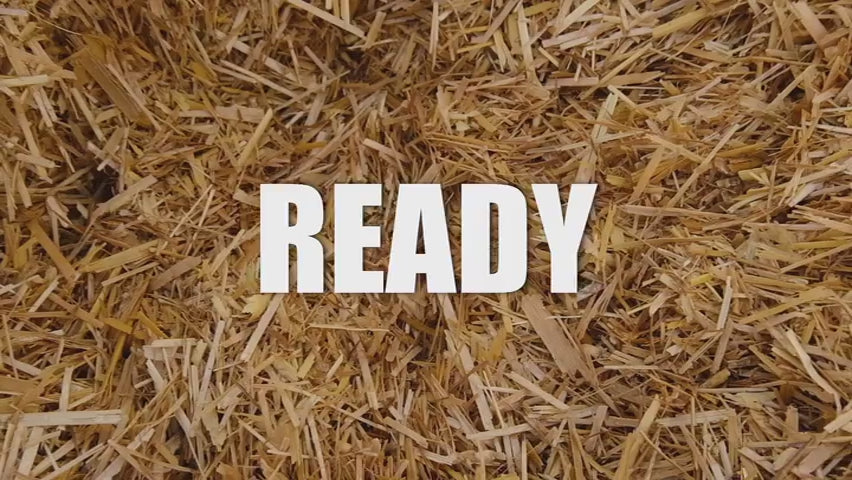
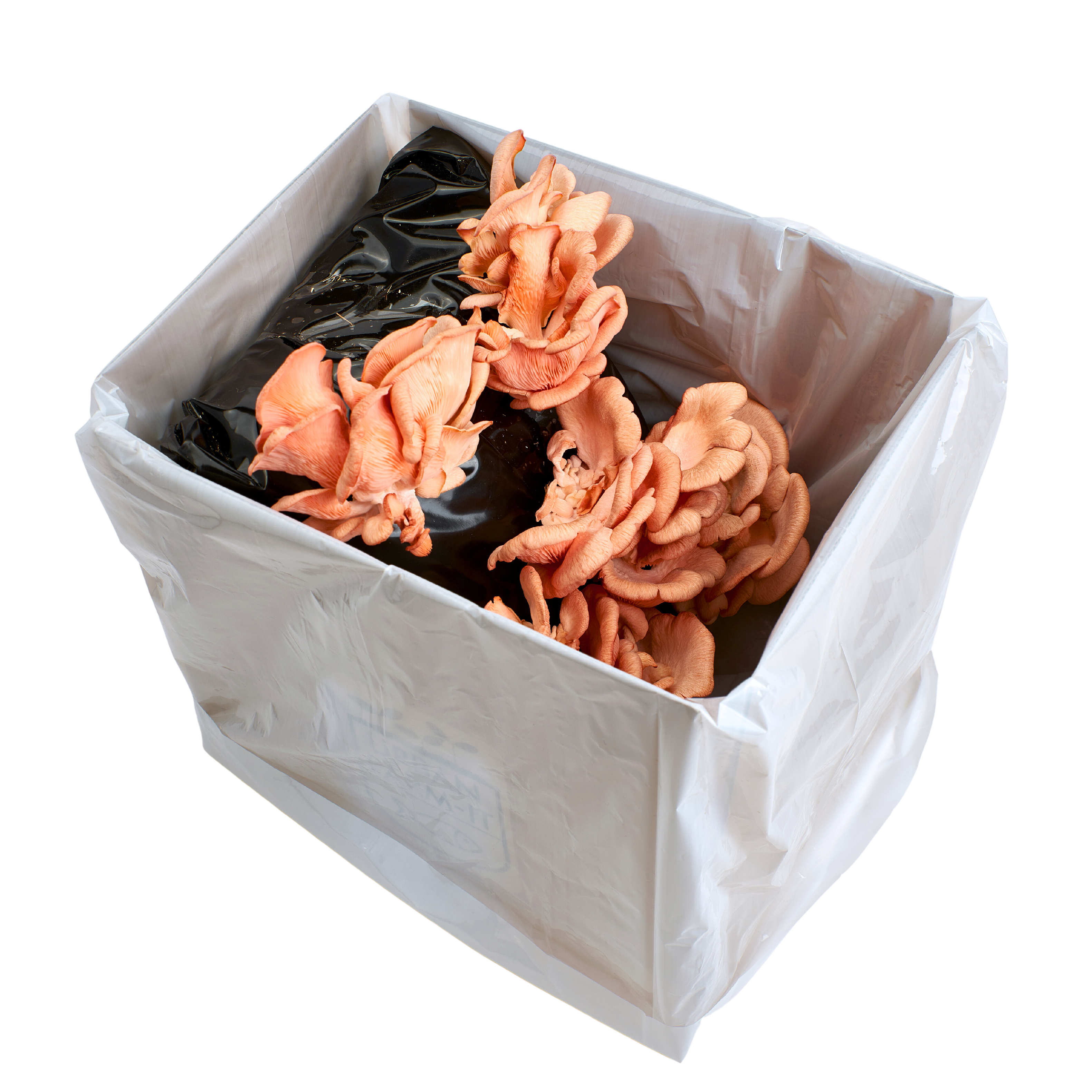
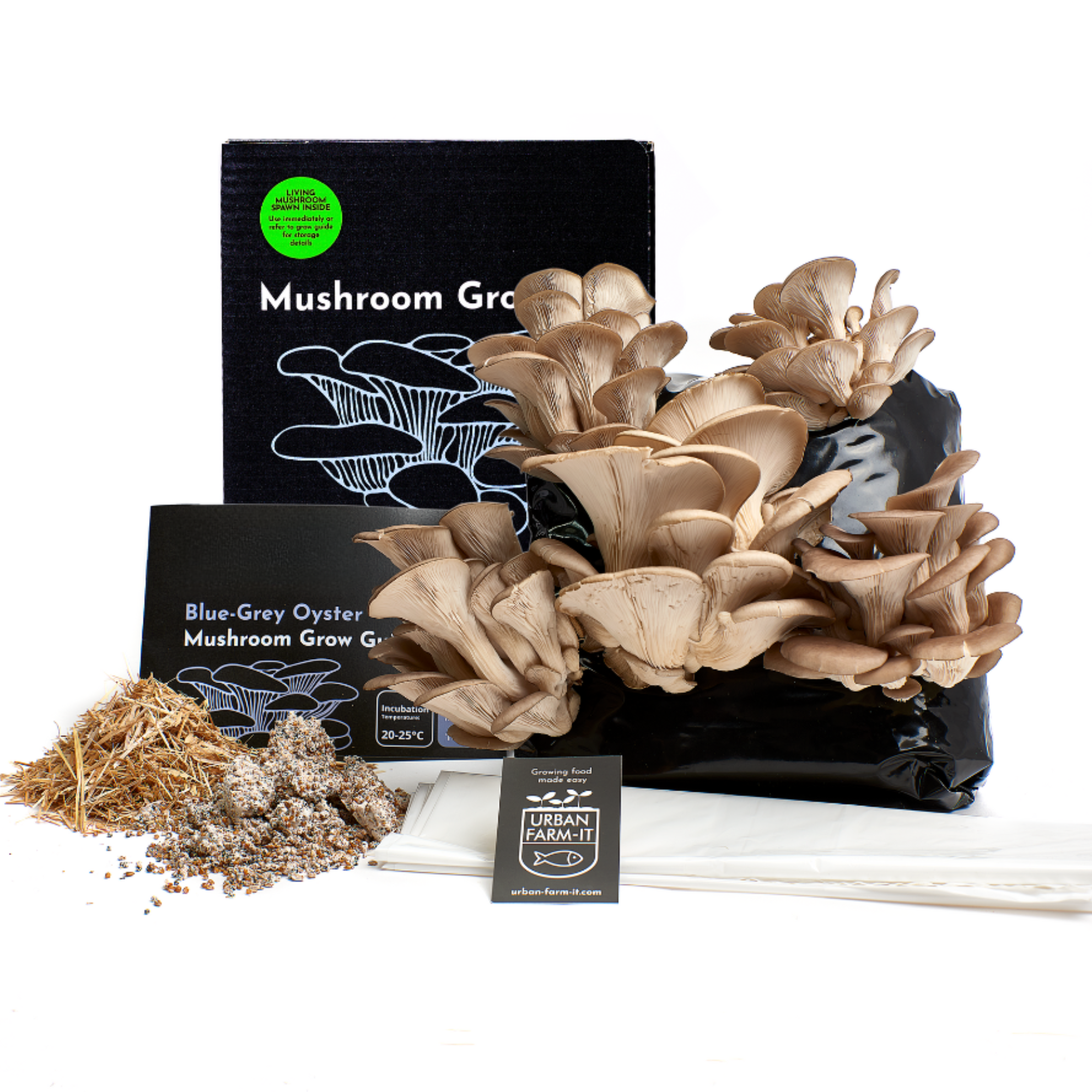
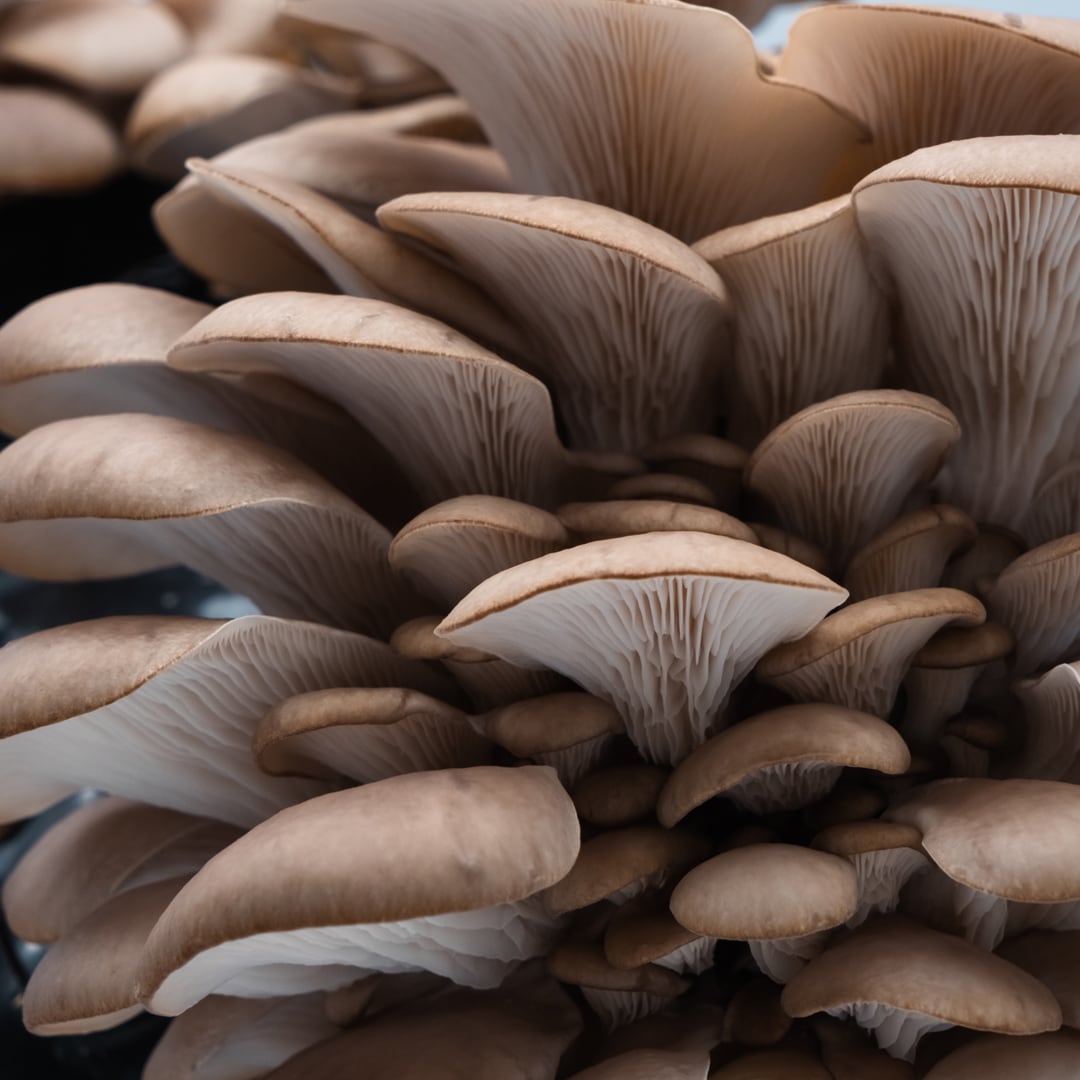
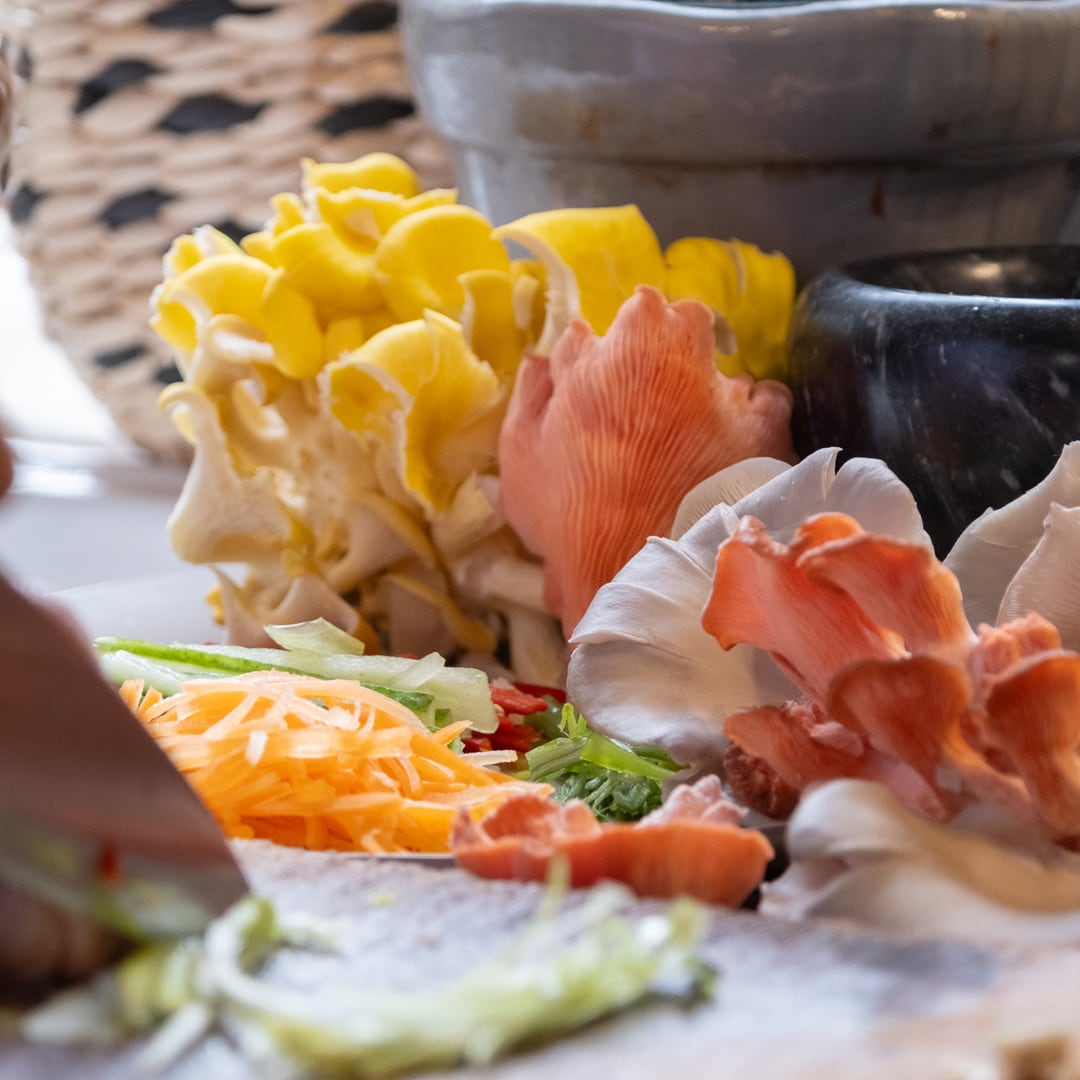
Share:
What is Master’s Mix? How to Grow Mushrooms on Soy Hulls
How to Grow Lion's Mane Mushrooms